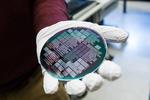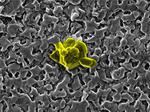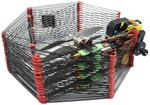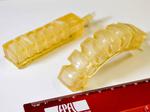Other

“A skyrmion is a collection of electron spins that look like a vortex in certain magnetic materials. Skyrmions can exist individually or in patterns referred to as lattices. Named after British physicist Tony Skyrme who first theorized the existence of …

“Vanadium dioxide’s unique properties make it perfect for outperforming silicon and giving rise to a new generation of low-power electronic devices. Under the Phase Change Switch project (https://phasechange-switch.org/), which is being funded by the EU’s Horizon …

“Perovskite solar cells are an alternative to conventional silicon solar cells, poised to enter the market with their high power-conversion efficiencies (above 22% now) and lower capital expenditure and manufacturing costs. One of the main methods for depositing perovskite films …

“Researchers at EPFL have developed a system that can be installed in a building to collect data on people’s energy usage. The aim is then to send this data directly to a smart electric grid that will allocate resources …

“A group of spintronics researchers at EPFL is using new materials to reveal more of the many capabilities of electrons. The field of spintronics seeks to tap the quantum properties of “spin,” the term often used to describe one of …

“With the power-conversion efficiency of silicon solar cells plateauing around 25%, perovskites are now ideally placed to become the market’s next generation of photovoltaics. In particular, organic-inorganic lead halide perovskites offer manufacturing versatility that can potentially translate into much …

“A new drone developed at EPFL uses cutting-edge technology to deliver parcels weighing up to 500 grams. The device will never get stuck in traffic, it’s programmed to avoid obstacles, and it can reach destinations on the steep or …

“Researchers at EPFL’s Robotic Systems Laboratory (LSRO), which is headed by Professor Francesco Mondada, have developed a miniature robot that can integrate perfectly into schools of zebrafish. Their work was carried out as part of an EU research program …

“Researchers have long been trying to make electronics that are safe to eat. These include edible transistors, sensors, batteries, electrodes, and capacitors, which (if you put them together) are most of an edible robot. What’s been missing so far …

“Intelligent vehicles get their intelligence from cameras, Light Detection and Ranging (LIDAR) sensors, and navigation and mapping systems. But there are ways to make them even smarter. Researchers at EPFL are working to improve the reliability and fault tolerance of …
